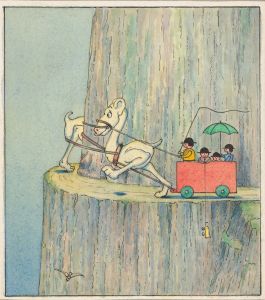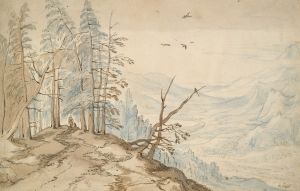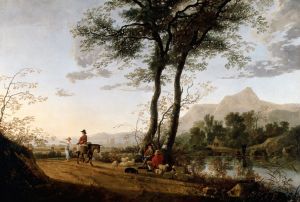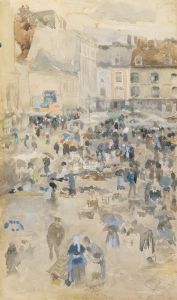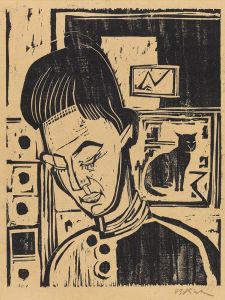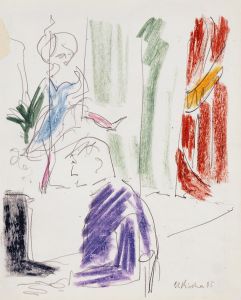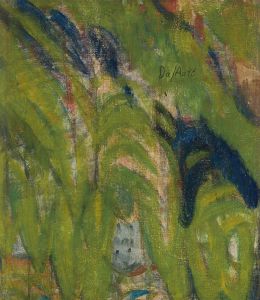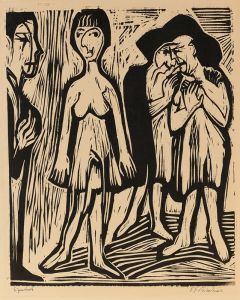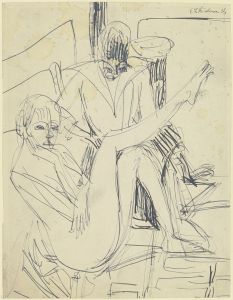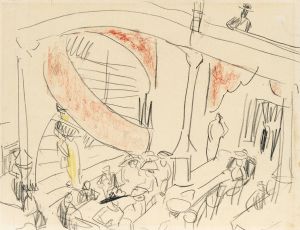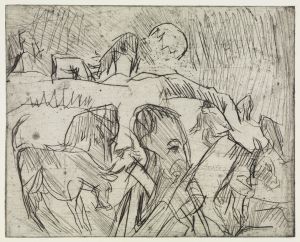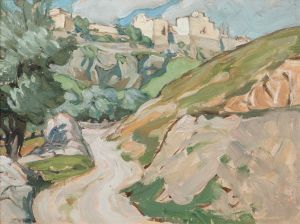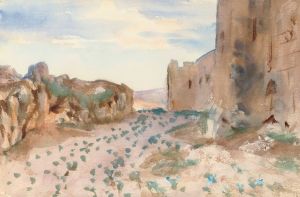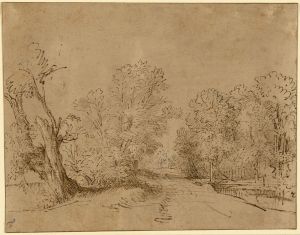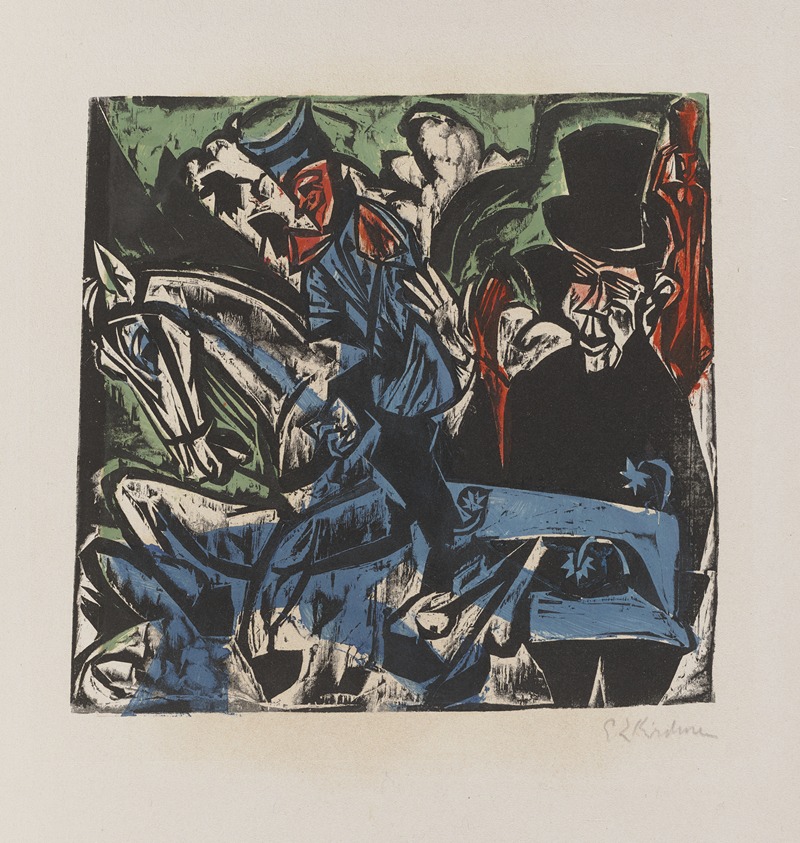
Schlemihl’s Encounter with the Little Grey Man on the Country Road
A hand-painted replica of Ernst Ludwig Kirchner’s masterpiece Schlemihl’s Encounter with the Little Grey Man on the Country Road, meticulously crafted by professional artists to capture the true essence of the original. Each piece is created with museum-quality canvas and rare mineral pigments, carefully painted by experienced artists with delicate brushstrokes and rich, layered colors to perfectly recreate the texture of the original artwork. Unlike machine-printed reproductions, this hand-painted version brings the painting to life, infused with the artist’s emotions and skill in every stroke. Whether for personal collection or home decoration, it instantly elevates the artistic atmosphere of any space.
Ernst Ludwig Kirchner's painting Schlemihl’s Encounter with the Little Grey Man on the Country Road is a work created in 1915 by the German Expressionist artist. Kirchner was a founding member of the influential art movement Die Brücke (The Bridge), which sought to break away from traditional academic art and explore more emotional and expressive forms of visual representation. This painting reflects Kirchner's interest in psychological themes and his engagement with literature and mythology.
The title of the painting refers to a scene from the novella Peter Schlemihl's Remarkable Story (1814) by Adelbert von Chamisso. The story follows the protagonist, Peter Schlemihl, who sells his shadow to a mysterious grey man in exchange for unlimited wealth, only to face social alienation and existential despair as a result. Kirchner's choice to depict this encounter suggests his interest in themes of alienation, identity, and the consequences of modernity, which were central concerns for many Expressionist artists of the time.
The painting is executed in Kirchner's characteristic style, marked by bold, angular forms, vivid colors, and dynamic compositions. The figures and landscape are rendered in a distorted and exaggerated manner, emphasizing emotional intensity over naturalistic representation. This stylistic approach aligns with the broader goals of the Expressionist movement, which sought to convey inner experiences and subjective realities rather than objective appearances.
Kirchner painted Schlemihl’s Encounter with the Little Grey Man on the Country Road during a tumultuous period in his life. In 1915, he volunteered for military service during World War I but suffered a mental and physical breakdown shortly thereafter. This experience profoundly affected his art, leading to works that often explored themes of anxiety, isolation, and the psychological impact of war. While it is unclear whether this specific painting directly reflects his wartime experiences, the sense of unease and tension in the composition resonates with the broader context of his life and work during this period.
The painting is now part of the collection of the Brücke Museum in Berlin, which houses a significant number of Kirchner's works as well as those of other members of Die Brücke. The museum is dedicated to preserving and showcasing the legacy of the Expressionist movement, providing insight into the artistic innovations and cultural concerns of early 20th-century Germany.
This artwork exemplifies Kirchner's ability to merge literary inspiration with his distinctive visual language, creating a powerful and evocative image that continues to engage viewers and scholars alike.





